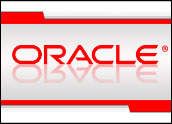
At its annual Dreamforce event, Salesforce.com and several of its partners (Facebook, Google and Amazon) made announcements intended to encourage more businesses to pursue Web-as-a-platform using their Force.com business process platform. Taking away significant amounts of hype, there were three themes for the conference: Cloud computing that takes SaaS (Sofware as a Service)-based application delivery to the business process platform level; customer success announcements and ecosystem partnerships designed to provide industry; and business-process applications as part of the Force.com platform strategy.
Growth on the platform has been impressive: Dell has launched a global Channel Management System in six months to 30,000 channel partners and has registered US$200 million of new deals using the Force.com platform. Other customers — Citibank for IT governance; Morgan Stanley for recruiting and training, and Ashland for samples management — detailed similar successes.
Force.com Has a Direct Impact on CIO Projects for 2009
But what do these grand announcements mean to the CIO of a company who in 2008 and 2009 is struggling to tackle more projects with fewer resources and less budget? The answer: a profound effect on the economics of specific near-term projects that a CIO may undertake.
Applications development and maintenance budgets for CIOs at both large and small/medium enterprises fall in the range of 50 to 70 percent; responsibility shifts to Force.com for maintenance of Service Level Agreements (SLAs) and expenses related to middleware, applications, tools, user interface, analytics and database.
The impact of platform as a service for the CIO: a dramatic shift of limited budgets from applications management and maintenance to new project applications development. Given the current economic environment, this should be a major factor in 2009 propelling the adoption of platform as a service.
SaaS, Business Applications Demand and ROI
Current Aberdeen Group research into platform as a service supports these trends. In October, 2008, Aberdeen surveyed more than 120 end-user organizations about their plans for SaaS adoption. From the survey data, Aberdeen segmented those users based on performance metrics into Best-in-Class performers (those who are in the top 20 percent from a performance perspective), Industry Average (those who are in the middle 50 percent from a performance perspective), and Industry Laggard (those who are in the bottom 20 percent from a performance perspective).
Those companies are pursuing and considering SaaS and cloud computing initiatives to deliver new applications faster, maximize the ROI and minimize the escalating costs of their IT infrastructures, as shown in Figure 1.
No matter which performance group CIOs at these companies fell into, reasons for looking at SaaS initiatives were relatively consistent:
- Among Best-in-Class respondents, meeting increased business demand for new applications (59 percent), maximizing ROI of IT (47 percent) and managing escalating infrastructure costs (47 percent) were cited as pressures.
- Among Laggard respondents, meanwhile, top pressures included meeting increased business demand for new applications (57 percent), maximizing ROI of IT investments (39 percent), and managing escalating IT costs (35 percent).
Force.com: On the Radar for the Medium-Term
As important as the short-term economic impacts are, to the extent that Salesforce.com is successful with its Force.com platform, Salesforce.com will continue to gain market relevance against enterprise vendors such as Microsoft, SAP and Oracle striving to develop true multi-tenant, on-demand, profitable delivery models.
From the conference, clearly Salesforce.com executives have Microsoft, SAP and Oracle in their sights as they do battle in 2009. Each of these vendors, however, has varying degrees of experience and success in developing profitable revenue streams from multi-tenant on-demand business. The other problem: All three have established decades-old on-premise licensing models producing billions of dollars in revenue and employing dozens of thousands of people:
- Microsoft has recently announced (October of 2008) Azure, their Windows-based compute and storage service/”compute fabric” in conjunction with Amazon. It is unclear exactly how Azure will work for a customer and it is unclear how it will co-exist with the millions of existing Microsoft desktops in the world today. However, Microsoft is determined to be a major player in the market and has billions in free cash flow to finance their efforts.
- Oracle’s CRM On-Demand business has developed an impressive roster of clients in a relatively short period of time, especially those enterprise Siebel clients who have implemented on-premise Siebel and who have smaller business partners who demand SaaS-delivered applications.
- SAP, which has scaled back investment in Business by Design in the past months to no doubt focus on perfecting the multi-tenant model that ensures scalability and profitability.
For the CIO looking at strategic projects three to five years out, he or she will need to monitor the successes of the Force.com platform and the actions of competitors such as Microsoft, SAP and Oracle to determine strategic relevance over time.
Ecosystem Partners and Platform Acceptance
Salesforce.com is developing a rich ecosystem of ISV (independent software vendor) partners able to provide industry- and business-process extensions usable in the Force.com environment: There are now 110,000 registered Force.com developers, up from 50,000 developed a year ago. Key to growth will hinge on their ability to enable these business partners. Two partner stories stand out:
- Coda, the 30-year old financials application vendor who developed on-premise accounting systems in the 1970s on the HP, on the DEC VAX in the 1980s and on the IBM AS/400 in the 1990s, completely rewrote the application for the Force.com platform. A very telling statistic: In their transformation to the Force.com platform, they have significantly reduced the 30/40 percent they have budgeted for applications development and middleware to an estimated 10 to 15 percent. Moving to this platform has saved significant amounts of time and effort formerly devoted to middleware and related applications development. Impact on Salesforce.com customers: immediate access to rich financial applications functionality at a fraction of on-premise investment.
- Glovia/Fujitsu, which has rewritten the Glovia ERP / Order Management lead-to-billing functionality for the Force.com platform. They demonstrated live customers able to take a Salesforce order, provide visibility from lead to invoice, and check status on a mobile device; any Force.com partner can take advantage of this lead-to-billing functionality.
Strip away the showmanship, and for the CIO at a large enterprise or small/medium business, keep Salesforce.com and the Force.com platform on your radar screen. Watch for success in platform partner enablement and the unfolding story of market relevance as Salesforce.com does battle against Microsoft, SAP and Oracle. It should provide quite a lot of drama.
David Boulanger is research director of the customer management group at the Aberdeen Group.
















































